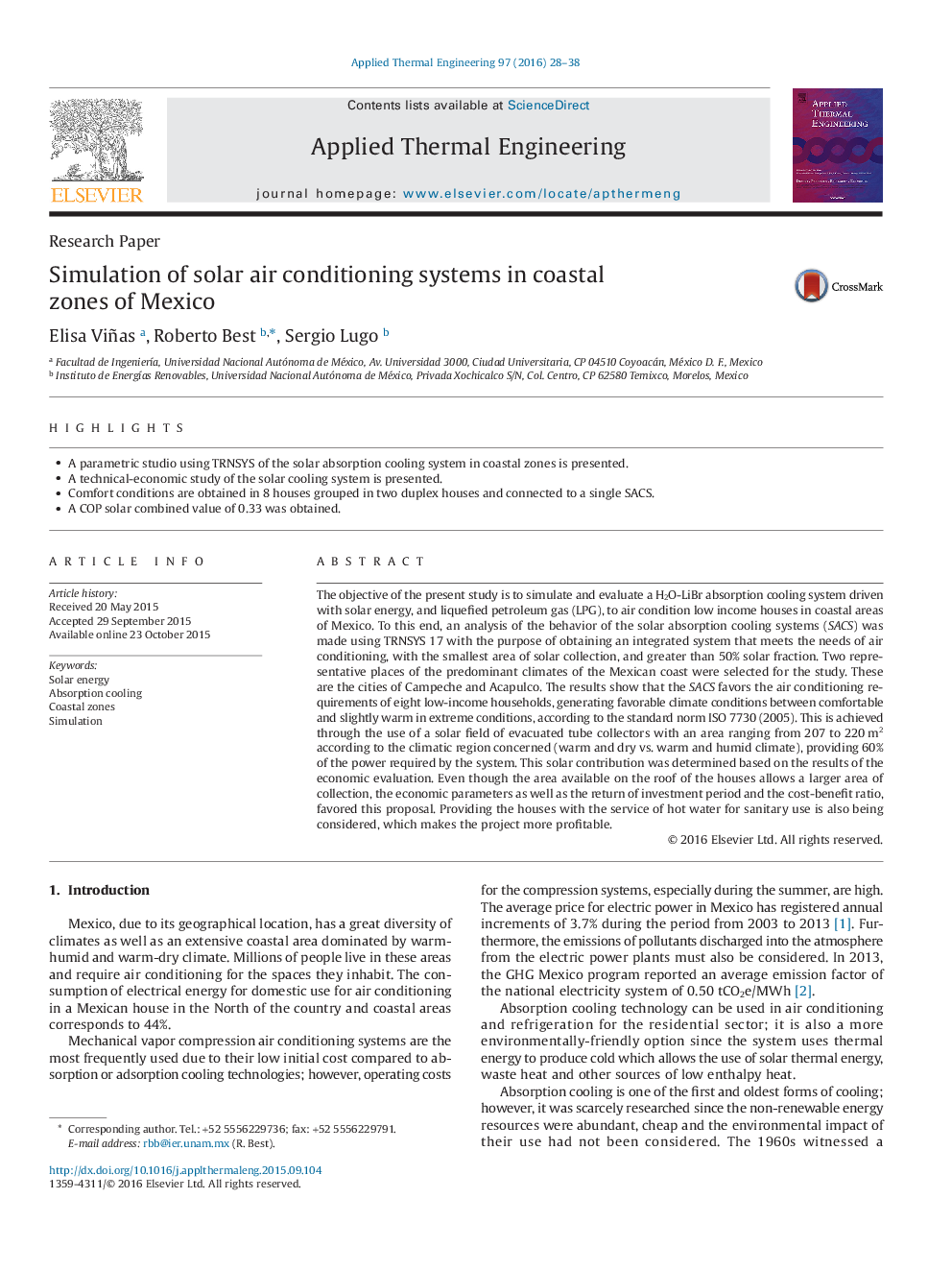ترجمه فارسی عنوان مقاله
شبیه سازی سیستم های تهویه مطبوع خورشیدی در مناطق ساحلی مکزیک
عنوان انگلیسی
Simulation of solar air conditioning systems in coastal zones of Mexico
| کد مقاله | سال انتشار | تعداد صفحات مقاله انگلیسی |
|---|---|---|
| 64594 | 2016 | 11 صفحه PDF |
منبع

Publisher : Elsevier - Science Direct (الزویر - ساینس دایرکت)
Journal : Applied Thermal Engineering, Volume 97, 25 March 2016, Pages 28–38
ترجمه کلمات کلیدی
انرژی خورشیدی؛ خنک کننده جذبی؛ مناطق ساحلی؛ شبیه سازی
کلمات کلیدی انگلیسی
Solar energy; Absorption cooling; Coastal zones; Simulation

